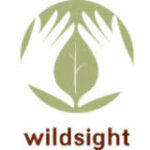Sunlight and Sunglasses -- Be Cool AND Smart
Summer weather is early this year, so, here is a reminder about sun exposure and what we really need to be careful about. In the past, sun was used in European clinics, using controlled amounts to cure diseases such as tuberculosis and heal wounds. Since the 60’s, we have been warned about sunbathing causing skin cancer, and wearing sunglasses to prevent sun damage. However, done properly during certain parts of the day and for a limited time, there are positive effects that may just outweigh the potential hazards.
The incidence of skin cancers has increased over the past few decades. Also, over-exposure in childhood to solar radiation can cause premature aging and can contribute to the most dangerous type of skin cancer- melanomas. Ultra-Violet (UV) light is made up of 3 main types- UVA, UVB and UVC, depending on its wavelength. Only 3% of sunlight reaching the earth is UV. UVA promotes tanning and burning, but UVB is essential to manufacture Vitamin D from squalene in the skin, which assists calcium and other minerals to be absorbed, therefore ensuring healthy bone development. If this does not occur, cholesterol can be formed instead. Therefore, sunlight also helps maintain proper blood pressure and cholesterol levels. UVC is mostly filtered out by the ozone layer. It is germicidal and kills bacteria, viruses and other infectious organisms. This is why it’s a good idea to hang laundry outside to dry. Not only does it smell fresh, but it is naturally disinfected!
Simple exposure to UV radiation in some cases is linked to cancer, but not all the time. Melanomas can be found on the palms and soles of feet where there is little sun exposure. A study comparing US Navy personnel found a higher risk in sailors with indoor jobs than those working outdoors. Therefore, while severe sunburn may trigger melanoma, regular small amounts of mild sun exposure produces melanin in the skin, which protects against sun-induced free-radical damage. Therefore, mild to moderate sun exposure may prevent it. Sunlight also helps the skin lipids to kill bacteria.
One of the main causes of melanoma may be fluorescent lights. Many studies are finding 2-4 times the risk for workers exposed to fluorescent lights, with the risk rising to 17 times for those who spent little time in the sun as children. Germany doesn’t allow fluorescent lights in hospitals and medical facilities due to the increase in cortisol and other stress hormones. Full spectrum lighting in schools has been found to decrease hyperactivity and misbehavior in classrooms by 30%. Interestingly, the number of cavities fell by 2/3 as well.
Another link to melanoma is the consumption of margarine, polyunsaturated cooking oils and the use of other saturated fats in foods. Processed food diets also increase the risk. Essential fatty acids are often deficient in those eating mostly saturated fatty foods, therefore increasing the sensitivity to UV radiation. Unsaturated fats found in nuts, seeds, fish and their oils protect against skin cancer. As you’ve read many times before, fruits, vegetables and whole grains help to protect you.
As well, birth control pills and certain sunscreens are suspected to promote skin cancers. The chemicals used in them may be harmful and may absorb into the body. It has been recommended by medical journals that sunscreens have minimal chemicals. Therefore, when you buy a sunscreen, buy a good quality natural sunscreen lotion.
Sunshine has been found to reduce osteoporosis and psoriasis due to the production of Vitamin D. Seasonal affective disorder and depression may also be reduced due to the increased production of the hormone serotonin and other hormones. The farther away from the equator, the higher the risk. Diet and environment may also play a factor, but a sunless existence has been found to be unhealthy.
Periods of intense exposure increase the risk, so, being outside early in the morning or later in the day are best. Early morning seems to be particularly beneficial. Full spectrum sunlight is essential, so try not to use sunscreen, use a cover-up if necessary. Wear a hat to protect the eyes and the more sensitive skin on your face, head and neck. A long sleeved light white cotton shirt and pants are a good alternative if you are very sensitive to the sun and now there are lovely gauzy material clothes that have UV protection built into them. Glasses may block the UV radiation from essential cell division, which may lead to macular degeneration. So, again in the early part of the morning or later in the day a hat is a better tool. If you are in conditions of high glare, such as water, snow or desert, wear protected glasses. Cataracts seem to be increasingly linked to malnutrition, poor diet, smoking and pollution, rather than sunlight.
Stay alert so you don’t burn, and assess your tolerance to sunlight. If you swim in a pool, try to find one that uses ozone rather than chlorine, since chlorine increases the risk of cancer.
Therefore, the point is to get out there and get some sun sensibly and in small amounts. The dietary and environmental insults of modern life are major contributors to the incidence of cancers, but the sun has taken the brunt of the blame unjustifiably. Sunshine is an essential nutrient and is good for you!
If you would like some specific information on which foods, nutrients or supplements are helpful to minimize sun damage for you, please call Dr. Brenda Gill for an appointment at: 250-362-5035


























